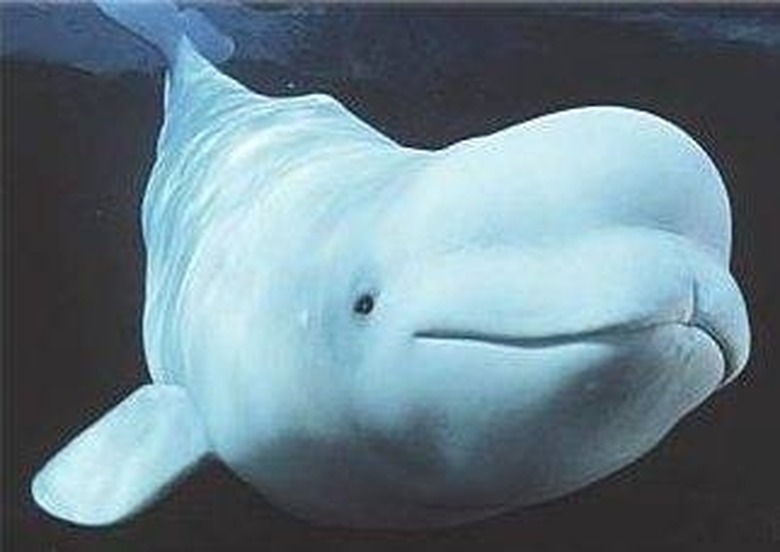How Do Belugas Protect Themselves?
Introduction to the Beluga Whale
Introduction to the Beluga Whale
The beluga is a type of whale that inhabits the icy waters of the Arctic Circle. It is also referred to as the "white whale." Unlike the white whale that Captain Ahab made out to be a merciless killer in the novel "Moby Dick," the beluga is a largely benign species. The beluga is one of only two members of the Monondontidae family, the other being the Narwhal. As a result it is somewhere between the typical whale and typical dolphin in form. This species lacks an actual dorsal fin, and instead steers itself through the water with an angular ridge running down the length of the back. It can grow up to 5 meters (15 feet) in length and is easily recognizable from its all-white color and a large dome or melon-shaped bump rising from its forehead. The beluga is a carnivore and uses its many flat teeth to eat fish and squid. These teeth are not pointed like those of the orca, which is one of the many creatures that prey upon the Beluga.
Misconceptions About the Beluga Whale
Misconceptions About the Beluga Whale
One of the greatest misconceptions regarding the beluga is the use of the large bony dome which dominates the whale's forehead. Because this species' only relative is the narwhal, which is well-known for the long and very dangerous unicorn-like horn protruding from its skull, it is assumed that the beluga uses the dome in much the same manner. The tusk is actually a large tooth the narwhal uses to spear fish and defend itself. Narwhal whales have even been known to kill fishermen and whalers with these teeth. Many people assume the beluga uses the dome as a battering ram against aggressors. In reality this dome is a fragile chamber that is used to modulate the beluga's call. This dome is responsible for the Beluga's unusually high-pitched twittering and would be badly damaged or shattered if used as a weapon.
Beluga Whale Defensive Measures
Beluga Whale Defensive Measures
The beluga defends itself from whalers, killer whales, sharks and other predators through indirect means only. It is not at all aggressive and will do its best to get away if it finds itself attacked, regardless of circumstance. There are three methods by which they avoid predation. The first is camouflage. The beluga is completely white, perfectly matching the ice floes of its natural habitat. The majority of Arctic predators hunt by sight. If the Beluga cannot be distinguished from its surroundings, it cannot be attacked. The second is location. The beluga can live comfortably in much warmer climates, but by living in Arctic waters, where sharks are few and far between, they decrease the chances of contact. The third follows the old adage "there's safety in numbers." The beluga swim together in very large pods that often exceed 100 members. By doing this, they deter lone predators. Also, by presenting a high number of targets, any predator stubborn enough to attack is less likely to kill a particular whale. This works from an individualist standpoint.
Cite This Article
MLA
Albers, John. "How Do Belugas Protect Themselves?" sciencing.com, https://www.sciencing.com/belugas-protect-themselves-4567266/. 22 November 2019.
APA
Albers, John. (2019, November 22). How Do Belugas Protect Themselves?. sciencing.com. Retrieved from https://www.sciencing.com/belugas-protect-themselves-4567266/
Chicago
Albers, John. How Do Belugas Protect Themselves? last modified March 24, 2022. https://www.sciencing.com/belugas-protect-themselves-4567266/
